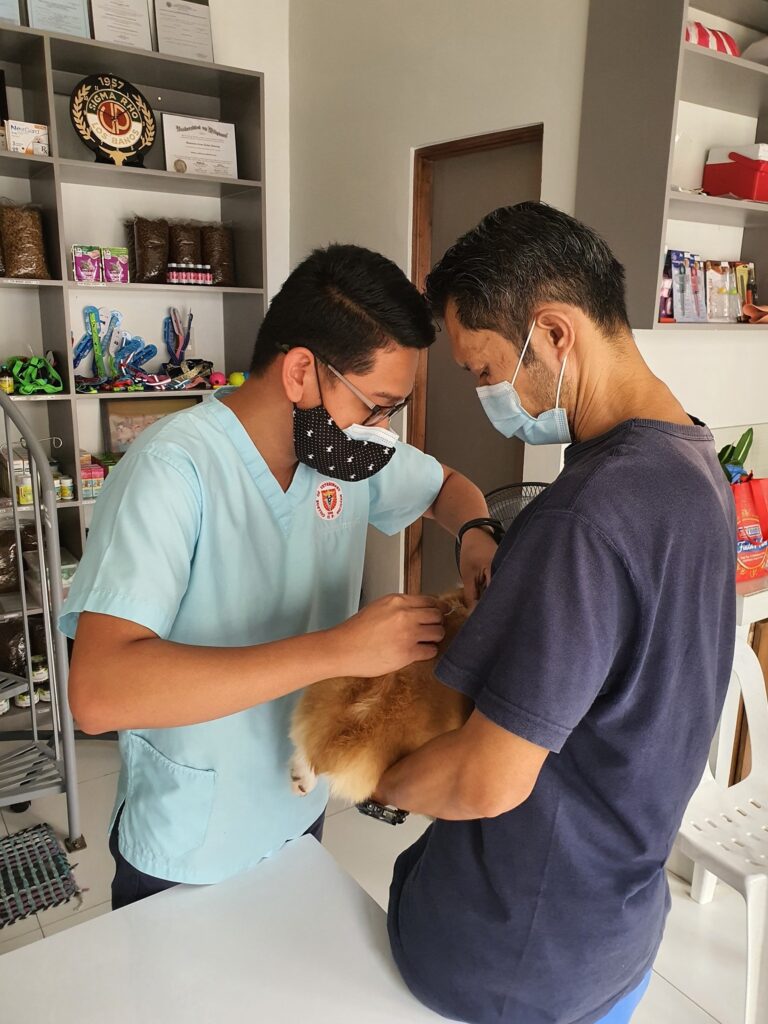Need help with Reactive Dog Behaviour? Join my FREE Facebook support group...
Muzzle train your dog
The idea of using a muzzle makes many dog owners recoil in horror. But, it doesn’t necessarily mean your dog is now labelled as aggressive. There are lots of good reasons to muzzle train your dog, such as for visits to the vet, or to stop your dog from eating trash off the ground.
Of course, if your dog does show aggressive behaviours then it’s the responsible thing to do, but it doesn’t mean you have given up on your dog. Quite the opposite. This could be the one thing that gives you the confidence to start meaningful training.
Reasons to use one
There are four main reasons to use a muzzle:
- Protect people that are working with your dog at times of possible risk, such as vets, groomer, or while training.
- Prevent your dog from coming to harm if they were to eat something that might make them sick or cause injury.
- Protect other dogs/animals, possibly whilst in training.
- Protect themselves. If your dog injures someone, it won’t matter how sorry you are, or how careful you are, he could be in serious trouble.
Maybe your dog is particularly mouthy with you on a walk, or is anxious around strange people, or maybe he likes to eat anything he can find. Perhaps he doesn’t like getting his nails clipped, or getting injections. Or maybe he is just very anxious and can be unpredictable.
In all cases, it should be thought of as a way to keep them, and others, safe. The worst can’t happen when he’s wearing a muzzle. It won’t solve your problems, in fact, it won’t change his behaviour at all. But used as part of a training plan, it can be really helpful and speed your training up.

As a tool
The muzzle should be thought of as a tool. When you muzzle train your dog, it allows you to work more confidentially with your dog. Dogs are highly intuitive and are able to pick up any sign of uncertainty. This is very unsettling for a dog and could cause them to become more anxious and unpredictable, which will make the whole situation worse. A confident handler will be reassuring for your dog. As will anyone else that is involved in your dogs training.
If your dog is extremely mouthy, it might help you to feel more in control, especially if you are not in a safe place. Extreme mouthing is no joke and a muzzle can be very empowering when you are trying not to reward the behaviour.
A muzzle can bring freedom to a dog that wouldn’t normally be able to have it too. If your dog eats everything they come across, it might not be possible to let them off the lead to play with other dogs. A muzzle could allow that to happen in a safe way! If they have allergies, or a sensitive stomach, this could be a game changer for them.
Misusing a muzzle
You must still consider your dogs limits when using a muzzle. This is especially the case when your dog is anxious. You should always be aware of how your dog is coping, and when they have had enough. Without good experiences your dog will never get better. In fact, their behaviour might even get worse if they are pushed too far. A muzzle should only be a back up for “just in case”.
Which muzzle?
I always recommend a basket type muzzle. They don’t look nice, but they are much more comfortable to wear, and will allow the dog behave normally. He can still snap and bite while wearing it, but because his mouth is contained within the basket, there is no risk to others. It’ll also allow him to breathe with ease, and he can drink water while wearing it too, so he can wear it for longer amounts of time.
A fabric muzzle often looks more acceptable, but it holds the mouth closed. This prevents normal behaviour, such as panting and drinking, and should only used for very short periods such as at the vet or groomer.
Introducing a muzzle
Even it you don’t have any current need for a muzzle, it’s never a waste of time to teach your dog to accept one. You never know when an emergency might occur that might require him to wear one.
Make it a game!
Start with the muzzle cupped in your hand, and spread something yummy inside the basket at the nose end. You could use cream cheese, peanut butter, meat paste, mayo, or anything your dog likes that can be spread. Now encourage him to put his face into the muzzle to lick it out. Do this lots of times until he is keen to do it.
When this happens, loosely fasten the muzzle around his neck and continue to offer it to him with his favourite spread on the inside. The next step is to put it over his mouth and fasten it. He should be happy for you to do this by now.
Now, make it a part of your routine to occasionally put it on him for no reason. Leave it on for short periods before removing it. Use your spread, but as time goes on, use it less and less.
How do you feel about muzzles?
Is your dog showing aggression?
Private Dog Behaviour Consultations are currently available in the Dundee area, and as far as Broughty Ferry, Monifieth, Tayport and Longforgan. If you are looking for help with your dog then get in touch and we’ll have a chat about the best way I can help you!


